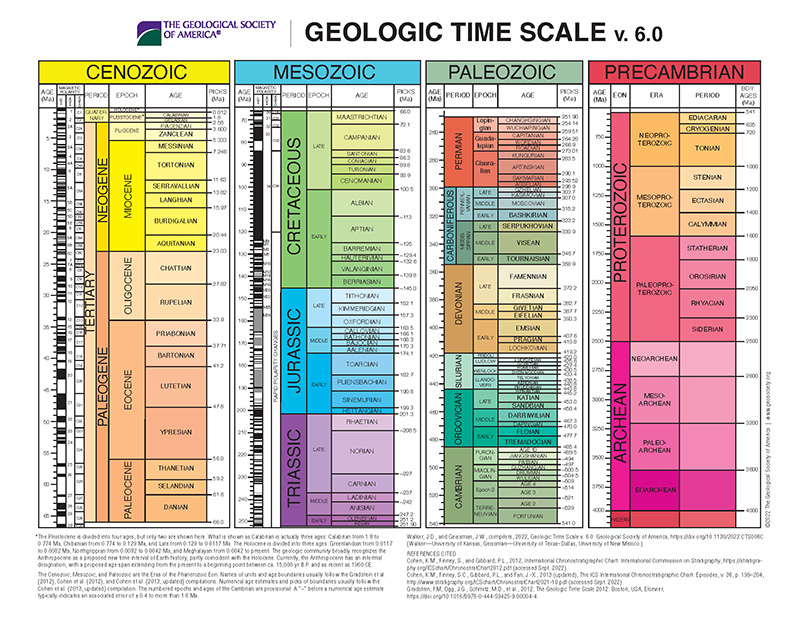The Geological Timeline
The geological timeline divides Earth's history into large eons, smaller eras, periods, epochs, and ages. This system helps us understand Earth's development, from its formation to the present day.
Eons: Major Divisions of Time
- Hadean Eon (4.6 to 4 billion years ago): Earth forms, and the planet is molten and bombarded by meteors.
- Archean Eon (4 billion to 2.5 billion years ago): Life begins with simple, single-celled organisms.
- Proterozoic Eon (2.5 billion to 541 million years ago): Oxygen builds in the atmosphere, and multicellular life evolves.
- Phanerozoic Eon (541 million years ago to present): The era of complex life, marked by major evolutionary events, including the rise of dinosaurs.

Geological Eras
- Precambrian Era – Formation of Earth, origin of life, first multicellular organisms.
- Paleozoic Era – Explosion of marine life, first land plants and animals, mass extinction.
- Mesozoic Era – Age of dinosaurs, first birds and mammals, asteroid impact extinction.
- Cenozoic Era – Rise of mammals, evolution of humans, current geological period.
Epochs
- Paleocene (66–56 million years ago) – Recovery from the mass extinction, rise of mammals.
- Eocene (56–34 million years ago) – Warm climate, early primates, first modern mammals.
- Oligocene (34–23 million years ago) – Cooling climate, expansion of grasslands, large mammals evolve.
- Miocene (23–5.3 million years ago) – Diversification of mammals and birds, early hominins appear.
- Pliocene (5.3–2.6 million years ago) – Further cooling, first bipedal hominins, modern ecosystems form.
- Pleistocene (2.6 million–11,700 years ago) – Ice ages, evolution of Homo sapiens, extinction of megafauna.
- Holocene (11,700 years ago–present) – Stable climate, rise of human civilizations, current epoch.
The Smallest Divison, Ages
- Gelasian Age (2.6–1.8 million years ago) – Beginning of the Pleistocene Ice Ages, first early human migrations.
- Calabrian Age (1.8–0.78 million years ago) – Expansion of glaciation, evolution of Homo erectus.
- Ionian Age (0.78–0.13 million years ago) – Advances in human tool use, Neanderthals thrive.
- Tarantian Age (130,000–11,700 years ago) – End of the Ice Age, extinction of large mammals.
- Greenlandian Age (11,700–8,200 years ago) – Start of the Holocene, warming climate, rise of agriculture.
- Northgrippian Age (8,200–4,200 years ago) – Stable climate, early civilizations emerge.
- Meghalayan Age (4,200 years ago–present) – Marked by global droughts, growth of modern societies.